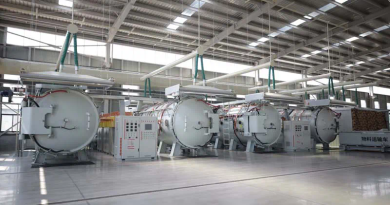Glass Lined Reactor Vessel- Structure and Function
The Glass Lined Reactor Vessel: Structure and Function
The glass lined reactor vessel is a sophisticated piece of equipment used extensively in chemical and pharmaceutical industries for processing corrosive and reactive substances. It combines difference between glass lined reactor and stainless steel reactor advanced materials with precise engineering to offer a vessel that is both durable and highly resistant to harsh chemical environments. This article delves into the structure and function of glass lined reactor vessels, providing an in-depth look at their design, benefits, applications, and operational considerations.
Structure of Glass Lined Reactor Vessels
A glass lined reactor vessel is constructed from several key components, each designed to contribute to the vessel’s overall functionality and efficiency. Understanding the structure is crucial for appreciating its advantages and operational capabilities.
Reactor Shell
The core of the glass lined reactor is the reactor shell, typically made of carbon steel. This material provides the vessel with the necessary mechanical strength and durability. The carbon steel shell is carefully engineered to withstand high pressures and temperatures, which are common in chemical processing.
Glass Lining
The most distinctive feature of the glass lined reactor vessel is its glass lining. This lining is applied to the interior surface of the reactor shell through a process called vitreous enamel coating. The glass lining is usually composed of borosilicate glass, known for its excellent chemical resistance and thermal stability. The application of the glass lining involves several steps, including the preparation of the surface, application of the glass enamel, and firing in a high-temperature kiln to fuse the glass to the metal.
Agitators
Agitators are integral components of the glass lined reactor vessel, responsible for mixing the contents to ensure uniformity and promote reactions. These can be designed in various configurations, such as turbine, anchor, or paddle agitators, depending on the specific needs of the process. The agitators are typically made of the same glass-lined material to prevent corrosion and ensure long-term durability.
Heating and Cooling Systems
Glass lined reactors are often equipped with heating and cooling systems to control the temperature within the vessel. These systems can include jackets or coils through which heating or cooling fluids circulate. The precise temperature control is essential for maintaining optimal reaction conditions and ensuring product quality.
Seals and Gaskets
To maintain the integrity of the glass lining and prevent leaks, high-quality seals and gaskets are used. These components are designed to withstand chemical exposure and high temperatures, ensuring a tight seal between the reactor vessel and its accessories.
Function of Glass Lined Reactor Vessels
The primary function of a glass lined reactor vessel is to facilitate chemical reactions in a controlled environment. The design and materials used in these vessels contribute to their effectiveness in various applications.
Chemical Resistance

One of the foremost functions of glass lined reactor vessels is their ability to resist corrosion from aggressive chemicals. The glass lining acts as a protective barrier between the reactive substances and the underlying metal shell. This protection is crucial for processes involving acids, bases, and other corrosive agents, as it extends the life of the reactor and minimizes the risk of contamination.

Thermal Stability
Glass lined reactors are designed to operate under a wide range of temperatures. The glass lining can withstand high temperatures without degrading, making it suitable for processes that require heating or cooling. The thermal stability of the glass lining ensures that the reactor maintains its integrity and performance even under extreme conditions.
Uniform Mixing
The agitators within the glass lined reactor play a vital role in achieving uniform mixing of the reactants. Effective mixing is essential for ensuring that chemical reactions proceed efficiently and that the final product meets the required specifications. The design of the agitators, combined with the smooth glass lining, helps prevent the formation of dead zones and promotes thorough mixing.
Applications of Glass Lined Reactor Vessels
Glass lined reactor vessels are used in a variety of industrial applications, each leveraging the unique properties of the glass lining to achieve specific results.
Chemical Manufacturing
In the chemical manufacturing industry, glass lined reactors are employed for the production of a wide range of chemicals, including pharmaceuticals, agrochemicals, and specialty chemicals. The resistance to corrosion and ability to handle high temperatures make these reactors ideal for processes involving reactive intermediates and corrosive chemicals.
Pharmaceutical Production
The pharmaceutical industry requires reactors that meet stringent cleanliness and safety standards. Glass lined reactors are commonly used in the production of active pharmaceutical ingredients (APIs) and other pharmaceutical compounds. The glass lining ensures that the reactor is resistant to contamination and maintains product purity throughout the manufacturing process.
Food and Beverage Industry
The food and beverage industry also utilizes glass lined reactor vessels for processing ingredients and producing various products. The non-reactive nature of the glass lining makes it suitable for handling food-grade chemicals and additives, ensuring that the final products are safe for consumption.
Operational Considerations
While glass lined reactor vessels offer numerous benefits, their operation requires careful consideration to ensure optimal performance and longevity.
Maintenance
Regular maintenance of glass lined reactors is essential to preserve their functionality and extend their service life. This includes inspecting the glass lining for any signs of damage or wear, checking the condition of seals and gaskets, and ensuring that the agitators and heating/cooling systems are functioning properly.
Handling and Installation
Proper handling and installation of glass lined reactors are critical to prevent damage to the glass lining. The reactors should be transported with care, and installation should be performed by trained professionals who understand the specific requirements of glass lined equipment.
Cleaning
Cleaning protocols for glass lined reactors must be designed to avoid damaging the glass lining. The use of abrasive cleaning agents or techniques should be avoided, and appropriate cleaning solutions should be selected to maintain the integrity of the glass surface.
In conclusion, the glass lined reactor vessel is a remarkable piece of engineering that combines durability, chemical resistance, and precision. Its structure, comprising a carbon steel shell and a protective glass lining, allows it to handle a wide range of chemical processes effectively. The various components, including agitators, heating and cooling systems, and seals, work together to ensure optimal performance. With its applications spanning across chemical manufacturing, pharmaceuticals, and food production, the glass lined reactor vessel remains a vital tool in industrial processes where corrosion resistance and precise control are paramount.
https://hearingearly.com/




